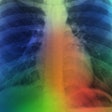
Many of us have stared into our home COVID-19 test, looking to see if there’s a faint line, indicating a positive test, or if there is no line at all, indicating a negative test. It sometimes seems impossible to tell the difference.
Researchers out of Imperial College London in the U.K. have recently developed an artificial intelligence (AI) algorithm that can take much of the guesswork out of analyzing our home-use lateral flow immunoassays (LFIAs). For people whose lives could be impacted by either false-negative or false-positive results in their home COVID-19 tests, the potential for more accurate readings of LFIAs would be a welcome development.
In research published in the journal Nature, the Imperial College team collected photographs of the antibody test results of 500,000 people in the U.K. and designed an AI-based computer system to analyze the results. The analysis of the AI system closely matched the determination of experts, thereby providing a quick and automated way of mitigating any mistakes that people made in reading their own results.
The images collected are part of what's known as REACT-2, a series of surveys to determine the prevalence of SARS-CoV-2 antibodies in the U.K. The researchers believe that the use of this AI-enabled computer system could provide a critically needed tool for analyzing COVID antibodies at the level of countrywide populations in surveys such as REACT-2.
The researchers also believe that the AI system would enable better-informed decisions on such matters as when booster vaccines are needed. In addition, with millions of tests to be performed, the AI system's ability to identify sources of error could also lead to improvements in user instructions and guidelines, or even influence LFIA device design and manufacture.
"We describe the development of a machine learning pipeline (ALFA - Automated Lateral Flow Analysis) to support visual auditing of home-based LFIA self-test results for population-level community SARS-CoV-2 antibody prevalence studies," the researchers stated in their report. "In applying ALFA to over half a million images, we found excellent agreement between self-readings by members of the public and ALFA's outputs."
While "excellent agreement" between the AI and members of the public is a good indicator for the accuracy of the AI, the researchers also found that there was even greater agreement between the AI and human-expert assessments.
"We demonstrated the potential of the pipeline to accurately classify LFIA test result images, with an overall performance comparable to that of a human expert and slightly higher than that of a study participant, particularly for weak positive Immunoglobin G (IgG) results," the researchers stated in their report.
In addition to helping people who are not confident in interpreting their results from an LFIA device, the researchers believe that their computational pipeline system could be adapted to support a similar function for LFIAs used for SARS-CoV-2 antigen detection.
Furthermore, as the ALFA pipeline is modular, the researchers believe that elements can be adapted and adjusted in sequence for new devices, including LFIAs used in the diagnosis and surveillance of other diseases.



















